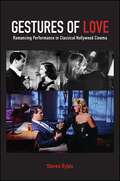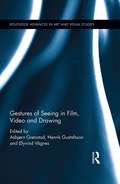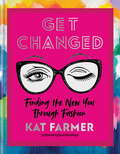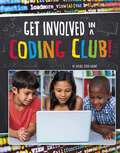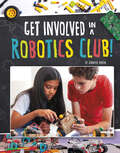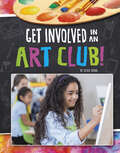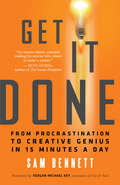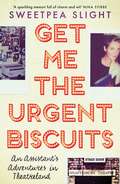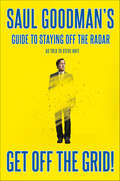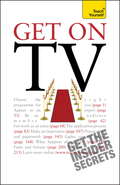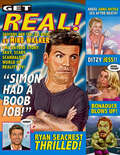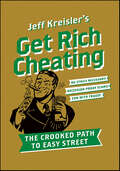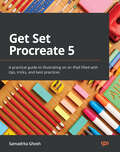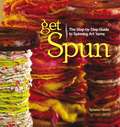- Table View
- List View
Gestures
by Vilém FlusserThroughout his career, the influential new media theorist Vilém Flusser kept the idea of gesture in mind: that people express their being in the world through a sweeping range of movements. He reconsiders familiar actions—from speaking and painting to smoking and telephoning—in terms of particular movement, opening a surprising new perspective on the ways we share and preserve meaning. A gesture may or may not be linked to specialized apparatus, though its form crucially affects the person who makes it.These essays, published here as a collection in English for the first time, were written over roughly a half century and reflect both an eclectic array of interests and a durable commitment to phenomenological thought. Defining gesture as &“a movement of the body or of a tool attached to the body for which there is no satisfactory causal explanation,&” Flusser moves around the topic from diverse points of view, angles, and distances: at times he zooms in on a modest, ordinary movement such as taking a photograph, shaving, or listening to music; at others, he pulls back to look at something as vast and varied as human &“making,&” embracing everything from the fashioning of simple tools to mass manufacturing. But whatever the gesture, Flusser analyzes it as the expression of a particular form of consciousness, that is, as a particular relationship between the world and the one who gestures.
Gestures of Love: Romancing Performance in Classical Hollywood Cinema (SUNY series, Horizons of Cinema)
by Steven RybinGestures of Love considers the viewer's enchantment with charismatic actors in film as the starting point for closely analyzing the performance of love in movies. Written with a thoughtful adoration for the actors who move us, Steven Rybin examines several of cinema's most beloved on-screen movie couples, including Katharine Hepburn and Cary Grant, Myrna Loy and William Powell, Carole Lombard and John Barrymore, Gene Tierney and Dana Andrews, Lauren Bacall and Humphrey Bogart, and Rock Hudson and Dorothy Malone. Using the classical genres of screwball comedy, film noir, and the family melodrama as touchstones, Rybin places the depiction of romance in films into dialogue with the viewer's own emotional bond to the actors on the screen. In doing so, he offers rich new analyses of such classic films as Bringing Up Baby, The Thin Man, Twentieth Century, Laura, To Have and Have Not, Tea and Sympathy, Written on the Wind, and more.
Gestures of Seeing in Film, Video and Drawing (Routledge Advances in Art and Visual Studies)
by Øyvind Vågnes Asbjørn Grønstad Henrik GustafssonThe first book of its kind, Gestures of Seeing in Film, Video and Drawing engages broadly with the often too neglected yet significant questions of gesture in visual culture. In our turbulent mediasphere where images – as lenses bearing on their own circumstances – are constantly mobilized to enact symbolic forms of warfare and where they get entangled in all kinds of cultural conflicts and controversies, a turn to the gestural life of images seems to promise a particularly pertinent avenue of intellectual inquiry. The complex gestures of the artwork remain an under-explored theoretical topos in contemporary visual culture studies. In visual art, the gestural appears to be that which intervenes between form and content, materiality and meaning. But as a conceptual force it also impinges upon the very process of seeing itself. As a critical and heuristic trope, the gestural galvanizes many of the most pertinent areas of inquiry in contemporary debates and scholarship in visual culture and related disciplines: ethics (images and their values and affects), aesthetics (from visual essentialism to transesthetics and synesthesia), ecology (iconoclastic gestures and spaces of conflict), and epistemology (questions of the archive, memory and documentation). Offering fresh perspectives on many of these areas, Gestures of Seeing in Film, Video and Drawing will be intensely awaited by readers from and across several disciplines, such as anthropology, linguistics, performance, theater, film and visual studies.
Get Addicted to Free-Motion Quilting: Go from Simple to Sensational with Sheila Sinclair Snyder
by Sheila Sinclair SnyderGet hooked on free-motion quilting Give your quilts the fancy finish they deserve with more than 60 lively continuous-line quilting designs from quilting pro Sheila Sinclair Snyder. Learn to stitch free-form spirals, feathers, flowers, bubbles, leaves, cables, and much more. Sheila shows you how to combine individual motifs into fluid designs for quilting blocks, borders, sashing, and all over the quilt. All designs work equally well on home sewing machines, mid-arm, and long-arm quilting machines, or for hand quilting. • Try each motif in three versions: simple, more involved, and fabulously over the top! • Includes bonus quilt project that’s perfect for practicing new quilting designs • Includes quilting designs for borders and sashing
Get Changed: Finding the new you through fashion
by Kat FarmerGet Changed is for the countless women out there who are wondering whether they know who they are anymore. Loss of identity is an experience all too familiar to Instagram style guru and professional stylist Kat Farmer. In her own life, she found that fashion helped her regenerate herself and rediscover her confidence. In Get Changed, Kat's authentic, down-to-earth voice, trademark humour, and insights into some of her personal anxieties make you feel like she's right there in the room with you. The book delivers the personal stylist experience to readers, a step-by-step practical guide to building the ultimate new wardrobe. Borrowing from the structure of a recipe book, the prep, the ingredients and the method, Kat breaks down the process with easy-to-remember tips and tricks; the reader will come away inspired and confident that they can build a wardrobe of clothes they love. Most importantly, Kat will show that finding your confidence again and discovering the new you can be as simple as getting changed. The book covers all the basics - sorting out and assessing your current wardrobe, working out what works for your body type and your lifestyle, how to shop successfully, key wardrobe pieces (crucially that will work together) all tackled with Kat's helpful, warm and funny approach.
Get Cooking with Wiskella: Let's Make ... Pancakes!
by Gino D'AcampoWatch the kitchen come to life as Wiskella is joined by her friends, Tongo and PanPan, in the search for super-fresh eggs to make the world's most delicious pancakes. Created and written by best-selling chef and author, Gino D'Acampo, Get Cooking with Wiskella is Gino's first children's book and is guaranteed to get your little ones excited about cooking!
Get Involved in a Book Club! (Join the Club)
by Sagirah ShahidLove curling up with a good book? If so, a book club might be the right fit for you. Find out what it takes to join a book club or start your own, including information on membership, meetings, and activities. Together, you and your fellow members can participate, create, and most importantly, have fun. Take the plunge, join the club, and get involved!
Get Involved in a Coding Club! (Join the Club)
by Rachel Ziter-GrantCan't get enough of coding? If so, a coding club might be the right fit for you! Find out what it takes to join a coding club or start your own, including information on membership, meetings, and activities. Together, you and your fellow members can participate, create, and most importantly, have fun. Take the plunge, join the club, and get involved!
Get Involved in a Robotics Club! (Join the Club)
by Jennifer MasonWild about robotics? If so, a robotics club might be the right fit for you! Find out what it takes to join a robotics club or start your own, including information on membership, meetings, and activities. Together, you and your fellow members can participate, create, and most importantly, have fun. Take the plunge, join the club, and get involved!
Get Involved in an Art Club! (Join the Club)
by Jessica Young Sylvie SparkAre you an art enthusiast? If so, an art club might be the right fit for you! Find out what it takes to join an art club or start your own, including information on membership, meetings, and activities. Together, you and your fellow members can participate, create, and most importantly, have fun. Take the plunge, join the club, and get involved!
Get Involved in an E-sports Club! (Join the Club)
by Christina MajaskiExcited about eSports? If so, an eSports club might be the right fit for you! Find out what it takes to join an eSports club or start your own, including information on membership, meetings, and activities. Together, you and your fellow members can participate, create, and most importantly, have fun. Take the plunge, join the club, and get involved!
Get Involved in an Environmental Club! (Join the Club)
by Lisa J. AmstutzPassionate about the environment? If so, an environmental club might be the right fit for you! Find out what it takes to join an environmental club or start your own, including information on membership, meetings, and activities. Together, you and your fellow members can participate, create, and most importantly, have fun. Take the plunge, join the club, and get involved!
Get It Done: From Procrastination to Creative Genius in 15 Minutes a Day
by Sam Bennett“Organized” and “artist” don't usually go together. Creative types are more often seen as sensitive, melodramatic, eccentric, misunderstood, and the like. To those who have been labeled in this way, Sam Bennett says, “Congratulations! You're an artist.” And through the Organized Artist Company, she has coached hundreds of artists to overcome procrastination, lack of focus, and time-sucking habits so that they can get their art done and out into the world. Bennett explains why “procrastination is genius in disguise” and then prescribes dozens of wonderfully revelatory exercises — such as making a “My Heroes” list and “could-do” lists (because Bennett finds to-do lists too dictatorial) — each of which requires only a fifteen-minute commitment. She gives readers practical, real-world tips, such as how to recognize who they should not talk to about their projects and when research has created Analysis Paralysis. Each of the tools she offers shifts the reader's thinking and prompts the kind of insights that have the power to turn underperforming geniuses into accomplished artists.
Get It Scrapped!: Organize, Visualize, Create
by Debbie HodgeReady, Set, Scrap!If you have stacks upon stacks of photos just waiting to be put to good use, turn to the amazing ideas in Get It Scrapped! to fire up your creative engines! Whether your photos are digital files or prints, everything you need to know for organizing your images, analyzing what you have and making a plan for the layouts you'd like to create is right here at your fingertips. Author and artist Debbie Hodge offers her unique methodology for creating several common page types in this must-have resource.Learn how to scrap a variety of page types including events, everyday life, collections, moments, the world around you and yourself.Discover a wealth of information on basic page formats, album types and sizes, photo storage and organization, creative journaling, photography and more.See how three featured artists approach the craft and the unique ways they put their own personal spin on the stories they share.Broaden your skills to design two-page layouts, create focal point blocks, design secondary groupings, tell a story in pictures and much more.It's time to shake the dust off that photo box, lay those snapshots out on the craft table and get scrapping!
Get Me the Urgent Biscuits: An Assistant's Adventures in Theatreland
by Sweetpea Slight'A sparkling memoir ... A delight from start to finish' NINA STIBBE 'Anyone who loves the theatre will love this book' ZOË WANAMAKER In 1980s London, Sweetpea Slight is en route to drama school when she is snapped up to work as an assistant to the maverick theatre producer Thelma Holt. Full of wit, charm and backstage intrigue, her irresistible memoir of the resulting twenty years is at once the poignant story of a young woman coming of age, and an exhilarating journey down the rabbit hole into the enchanting world of theatre.
Get Me the Urgent Biscuits: An Assistant's Adventures in Theatreland
by Sweetpea Slight'A sparkling memoir full of charm and wit' NINA STIBBE 'Anyone who loves the theatre will love this book' ZOË WANAMAKER At eighteen, after moving to London with dreams of becoming an actress, an impressionable girl who paints freckles on her face begins work experience in a West End theatre company. In between mail-outs and making cups of coffee she meets the formidable producer Thelma Holt. Within a fortnight Thelma has stolen her, cancelled her audition for RADA, sent her to evening classes to learn to type, organised a minuscule salary and renamed her. From that moment she becomes Sweetpea. Her days are spent in an eccentric office where Alan Rickman or Vanessa Redgrave might pop in at any moment. Evenings are filled with the adrenaline of an opening-night performance or the chatter of a smart restaurant where casting for the next production is discussed. Existing somewhere between glamour and penury, Sweetpea finds herself surrounded by dynamic personalities and struggling to trust her own creative instincts. Over the years her apprenticeship takes in unusual demands, misbehaving actors, divinely inspired directors and a hot-air balloon ride with British theatre's finest. GET ME THE URGENT BISCUITS is a keenly observed memoir about the vanishing world of London's West End in the 1980s and 1990s, in which a young woman is swept into the orbit of a theatrical impresario. Shrewd, poignant and irresistibly funny, above all it is a coming-of-age story about the search for independence and an ode to the beguiling nature of theatre.Read by Sweetpea Slight(p) Orion Publishing Group 2017
Get Me the Urgent Biscuits: An Assistants Adventures in Theatreland
by Sweetpea Slight'A sparkling memoir ... A delight from start to finish' NINA STIBBE 'Anyone who loves the theatre will love this book' ZOË WANAMAKER In 1980s London, Sweetpea Slight is en route to drama school when she is snapped up to work as an assistant to the maverick theatre producer Thelma Holt. Full of wit, charm and backstage intrigue, her irresistible memoir of the resulting twenty years is at once the poignant story of a young woman coming of age, and an exhilarating journey down the rabbit hole into the enchanting world of theatre.
Get Off the Grid!: Saul Goodman's Guide to Staying Off the Radar
by Steve HuffSo you want to disappear? Whether you got the fuzz on your back or a price on your head, Saul Goodman can help!Big Brother’s got eyes everywhere—don’t pretend they’re not all watching you. Nowadays you’d better assume anything you do is already on the 24/7 news feed, but there are measures you can take. Darken your windows. Bash your smartphone. Cut up your credit cards. But first, buy this book. From the cunning counsel (me) who kept you out of the slammer with his handy manual Don’t Go to Jail!, here’s your escape plan for busting out of the prison of modern surveillance. You might be up to no good or you might be up to nothing at all—hey, it’s not my business, and let me tell you, it’s nobody else’s business, either. My business is making sure it stays your business. An unlisted phone number is no longer enough. I want to help you find your inner alias. I want to show you your dream safe house. I don’t want to hear about you on the Internet. Get Off the Grid! can do all of this and more. It’s your one down-to-earth guide on going to ground, and not just that: it’s the best vanishing act you’ll never see!
Get On TV: Practical guidance on applications, auditions and your fifteen minutes of fame (Teach Yourself General Ser.)
by Katherine LapworthThis book gives you everything you need to find, apply for and take part in any reality programme, quiz or talk show. It explains each type of show to you, but most importantly, gives you lots of practical advice from industry insiders on what to say in an application, how to audition, what to expect and how to cope with life before, during and after your 15 minutes of fame.NOT GOT MUCH TIME?One, five and ten-minute introductions to key principles to get you started.AUTHOR INSIGHTSLots of instant help with common problems and quick tips for success, based on the authors' many years of experience.TEST YOURSELFTests in the book and online to keep track of your progress.EXTEND YOUR KNOWLEDGEExtra online articles at www.teachyourself.com to give you a richer understanding of how to get on TV.FIVE THINGS TO REMEMBERQuick refreshers to help you remember the key facts.TRY THISInnovative exercises illustrate what you've learnt and how to use it.
Get On TV: Practical guidance on applications, auditions and your fifteen minutes of fame (Teach Yourself General Ser.)
by Katherine LapworthThis book gives you everything you need to find, apply for and take part in any reality programme, quiz or talk show. It explains each type of show to you, but most importantly, gives you lots of practical advice from industry insiders on what to say in an application, how to audition, what to expect and how to cope with life before, during and after your 15 minutes of fame.NOT GOT MUCH TIME?One, five and ten-minute introductions to key principles to get you started.AUTHOR INSIGHTSLots of instant help with common problems and quick tips for success, based on the authors' many years of experience.TEST YOURSELFTests in the book and online to keep track of your progress.EXTEND YOUR KNOWLEDGEExtra online articles at www.teachyourself.com to give you a richer understanding of how to get on TV.FIVE THINGS TO REMEMBERQuick refreshers to help you remember the key facts.TRY THISInnovative exercises illustrate what you've learnt and how to use it.
Get Quilting with Angela & Cloe: 14 Projects for Kids to Sew
by Angela Walters Cloe WaltersThe author of Quilting is My Therapy teams up with her daughter in this beginner’s guide featuring 14 kid-friendly quilting projects.Angela Walters loves to quilt—and so does her daughter, Cloe. Now they teach the basics of quiltmaking to preteens and teens in Get Quilting with Angela & Cloe. The dynamic mother-daughter duo guides kids step by step through their very first quilt from prepping and planning to finishing touches. Readers can choose from 14 projects to keep or give as gifts, including stylish bedroom decor, such as pillow covers, rugs, and T-shirt quilts. Angela's eye for design and her approachable teaching style are the perfect complement to Cloe's kid-approved fabric choices and projects. With skill-builders and plenty of how-to photos, your kids can finally bring their imaginative creations to life!
Get Real: The Untold Story: Sexy, Scary, Scandalous World of Reality TV!
by Mike WalkerReality TV has never been juicier! Gossip columnist, Howard Stern radio show personality, and National Enquirer reporter Mike Walker dishes all the gossip on TV land's reality shows and stars in this exposé . Riveting and explosive, the "Guru of Gossip" shares the behind-the-scenes drama of television's most popular shows of the 21st century such as American Idol, The Apprentice, and Survivor. Here is the real, inside scoop on all the "heroes" and "villains" of the genre— from Richard Hatch and Simon Cowell to Paris Hilton and Donald Trump.
Get Rich Cheating: The Crooked Path to Easy Street
by Jeff KreislerIn these difficult times, there's only one proven path to ridiculous amounts of money: Cheating. Everyone's doing it—from sleazy CEOs to 'roided-up home run kings, silicone-enhanced starlets, and backroom-dealing congressmen—so why not you? Get Rich Cheating is your definitive guide to the illegal, immoral, and fun, detailing the schemes that have proven time and time again to generate more cash than God, Google, and the Treasury combined. No one ever bought a fleet of Bentleys with hard work, perseverance, and honesty. Simply by purchasing this book, you've already done more than most "ethical" people dare. Open it, savor the moment, and inhale deeply in the musk of your impending wealth—it's time to Get Rich Cheating.
Get Set Procreate 5: A practical guide to illustrating on an iPad filled with tips, tricks, and best practices
by Samadrita GhoshDiscover hacks to quickly get started with Procreate with the help of this color guide and learn how to use it on an iPad to create exquisite illustrations and animationsKey FeaturesFollow step-by-step instructions and tips on how to use Procreate to get the most out of itWork through hands-on tutorials with real artwork that will boost your confidence to explore Procreate furtherHighly recommended for iPad users who want to be able to paint on the goBook DescriptionProcreate is robust, industry-grade painting software that is extremely versatile yet an affordable alternative to subscription-based applications. If you're new to Procreate, Get Set Procreate 5 will help you get up to speed with creating professional illustrations in no time. Complete with step-by-step instructions, detailed explanations, and practical application guidelines, this easy-to-follow guide will cover the ins and outs of Procreate 5.2 and show you how to use each feature effectively. You'll learn how to draw using assistive tools, apply effects, create animations, and develop amazing artwork by implementing the skills learned throughout the book. Once you've got to grips with the new features of Procreate 5 for creating beautiful illustrations, animations, and graphics, you'll be able to explore the tools at your disposal and even create your own brushes, shortcuts, and menus to work efficiently. By the end of this Procreate book, you'll be able to navigate the application confidently and take your artwork to a new level.What you will learnBecome well-versed with the fundamentals of ProcreatePersonalize the Procreate application to suit your workflowGain preliminary knowledge of the tool to further explore it for your artworkSpeed up your workflow with gestures and shortcutsExplore, edit, and create a wide range of brushes with the help of Brush Library and Brush StudioUse assisted drawing tools to enhance your accuracyLearn animation using Procreate's Animation Assist toolsGet up-to-date with the new features of Procreate 5.2 like Page Assist and 3D painting.Who this book is forIf you're a beginner who wants to start illustrating professionally on Procreate, but feel lost about where to start, this is the right book for you! Start learning right from the very basics, and build up your knowledge step-by-step. This book is also a perfect fit for experienced illustrators/animators accustomed to other software like Photoshop, who would like to pick up a new skill.
Get Spun
by Symeon NorthPairing detailed instructions with clear, step-by-step photography, this dynamic guide of spinning techniques and demonstrations explores an array of fiber possibilities - such as wool, glitz, and sari silk - to create unique yarn for fiber art projects. Designed for the advanced beginner to the intermediate spinner, this reference covers a variety of subjects such as spinning fundamentals, techniques for wool and silk, spinning with nontraditional materials, introducing add-ins, and creating plying effects. Additionally, the comprehensive tutorial offers information on easy home dyeing and directions for using a drumcarder to blend colors and fibers.

